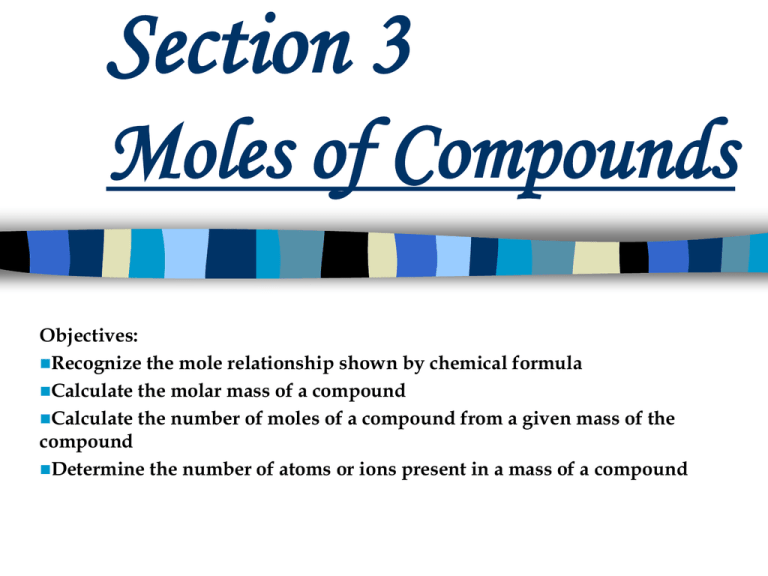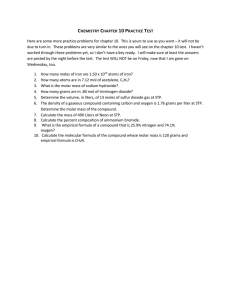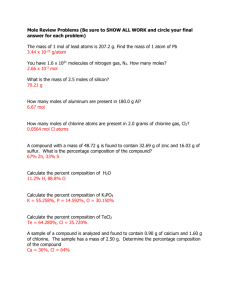Mass and the Mole
advertisement

Section 3 Moles of Compounds Objectives: Recognize the mole relationship shown by chemical formula Calculate the molar mass of a compound Calculate the number of moles of a compound from a given mass of the compound Determine the number of atoms or ions present in a mass of a compound Review of Chemical Formulas Indicates types & numbers of atoms contained in 1 unit of compound Freon is CCl2F2 – 1 atom of carbon – 2 atoms of chlorine – 2 atoms of fluorine Chemical Formulas Indicate number of moles of each element in 1 mole of the compound 1 mol of CCl2F2 has: –1mol C atom –2 mol Cl atoms –2 mol F atoms Sample Problem How many moles of F atoms are in 5.5 mol of freon? 5.5 mol CCl2F2 x 2 mol F atoms = 11 mol F 1 mol CCl2F2 Sample Problem 2 Determine the moles of aluminum ions (Al 3+ ) in 1.25 moles of Al2O3. Molar Mass of a Compound What is it for an element? g/mol Determined by adding up masses of each element in compound Example Find the molar mass of potassium chromate. Mole To Mass Conversion What is the mass of 2.50 moles of allyl sulfide, (C5H5)2S? Find molar mass of compound to use as conversion factor Moles x Molar Mass (g/mol) = Mass in grams Mass to Moles Conversion Calculate the number of moles of calcium hydroxide in 325g. Find molar mass of compound to use as conversion factor Grams x Molar Mass (mol/g) = Moles Sample Problem A sample of aluminum chloride (AlCl3) has a mass of 35.6g. – How many aluminum ions are present? – How many chloride ions are present? Homework Section 11.3 Problems 15-24 on pages 876-877



